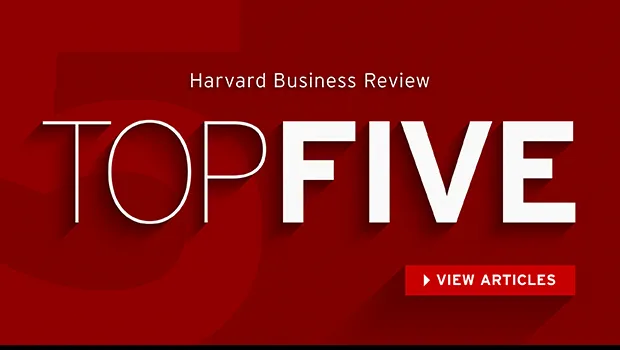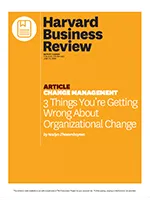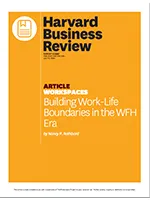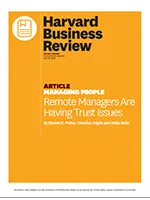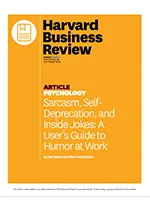5 must-read Harvard Business Review articles in November
Blog: The Enterprise Project - Digital Transformation
Each month, through our partnership with Harvard Business Review, we refresh our business library for CIOs with five new HBR articles we believe CIOs and IT leaders will value highly. The curated pieces below are available now through the end of November.
Reinventing your career in the time of coronavirus
During the pandemic, many professionals have found themselves at a crossroads – asking big questions about their career path, yet feeling risk-averse about the future. “How do we balance the pressing need to ensure basic survival – of our families and firms – with what may well be a growing urge to do something new after this crisis has subsided?” asks Herminia Ibarra, author of this HBR article. Even if a career change isn’t immediately possible, there’s no reason not to take steps in the direction you want to go, suggests Ibarra. In this article, she offers five recommendations for professionals who want to actively focus on reinventing their careers while living through uncertain times. From exploring multiple paths forward, to finding time to work on new projects, to tapping old connections – the time to get going on your new career is now, she says. Download this article for her advice.Download “Reinventing your career in the time of coronavirus”
3 things you’re getting wrong about organizational change
There are three “very basic, ingrained” assumptions about organizational change: follow best practices, don’t fix what isn’t broken, and control your assets. However, as the majority of transformation efforts fail to deliver the expected results, it might be time to flip our assumptions, argues Nadya Zhexembayeva, author of this HBR article. For instance, rather than adapt a mindset of “don’t fix what isn’t broken,” companies should actively try to break things, instead. Rather than controlling assets, there may be more benefit to sharing them, Zhexembayeva notes. Download this article to challenge your own assumptions around organizational change and learn exercises and steps teams can take to make adaptability part of their daily business life.Download “3 things you’re getting wrong about organizational change”
Building work-life boundaries in the WFH era
There are two types of preferences when it comes to work-family boundaries – those people who are comfortable blending work and family life, and those who prefer clear separation. Even before the pandemic, these preferences had an impact on how professionals navigated their time and space, and how they used perks like WFH and flex hours. Now, professionals from both ends of the spectrum are struggling to balance work and family time – but knowing your preferences can help you reconsider and optimize both your time and space, says Nancy P. Rothbard, author of this HBR article. In this article, she provides tips for regaining balance – and suggestions for how managers can help all their employees work from home more productively.Download “Building work-life boundaries in the WFH era”
Remote managers are having trust issues
When managers lack trust in how their remote employees are spending their time, it can lead to the very unreasonable expectation that employees be available at all times. Unchecked, this lack of trust can lead to a negative spiral of micromanagement, and decreased employee motivation as a result. To study this, researchers Sharon K. Parker, Caroline Knight, and Anita Keller launched a survey to investigate how COVID-19 is impacting both managers’ and employees’ work, well-being, and productivity. “The consequences of poor management at this time – for workers, families, and the economy – suggest the urgent need to help develop managers’ skills in this area,” they write. In this article, they suggest five ways to help managers more quickly adjust to remote management without stressing out their remote teams in the process.Download “Remote managers are having trust issues”
Humor at work: Sarcasm, inside jokes and more
Humor is a powerful tool in the workplace. Citing multiple studies, the authors of this HBR article, Brad Bitterly and Alison Wood Brooks, explain that people who make jokes at work are more likely to climb the corporate ladder, and – once they are leadership positions – more likely to have happier employees. “One good laugh – or better still, a workplace culture that encourages levity – facilitates interpersonal communication and builds social cohesion,” they write. Of course, context and content matter. Thinly-veiled brags or jokes that are offensive or insulting can lower the joke-teller’s status at work – or may even cost them their job. In this article, Bitterly and Brooks offer guidance on using humor at work, including when to use different types of humor, when to use humor to dodge difficult questions, and whether it’s OK to use humor to deliver negative feedback.Download “Sarcasm, self deprecation, and inside jokes: A user’s guide to humor at work”
Also read:
IT talent strategy: New tactics for a new era
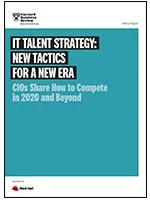 The year 2020 brings completely new IT talent challenges to organizations. In the decade ahead, technology talent will play a pivotal role in whether companies succeed or fail. This new research from Harvard Business Review Analytic Services identifies five talent practices CIOs should adopt now to ensure their organizations thrive in the future, offering insights from more than a dozen CIOs and talent experts. Download this report for real-world examples of how you can attract and cultivate the IT talent that will help you succeed.
The year 2020 brings completely new IT talent challenges to organizations. In the decade ahead, technology talent will play a pivotal role in whether companies succeed or fail. This new research from Harvard Business Review Analytic Services identifies five talent practices CIOs should adopt now to ensure their organizations thrive in the future, offering insights from more than a dozen CIOs and talent experts. Download this report for real-world examples of how you can attract and cultivate the IT talent that will help you succeed.
Download: "IT talent strategy: New tactics for a new era"
Primary Image:
